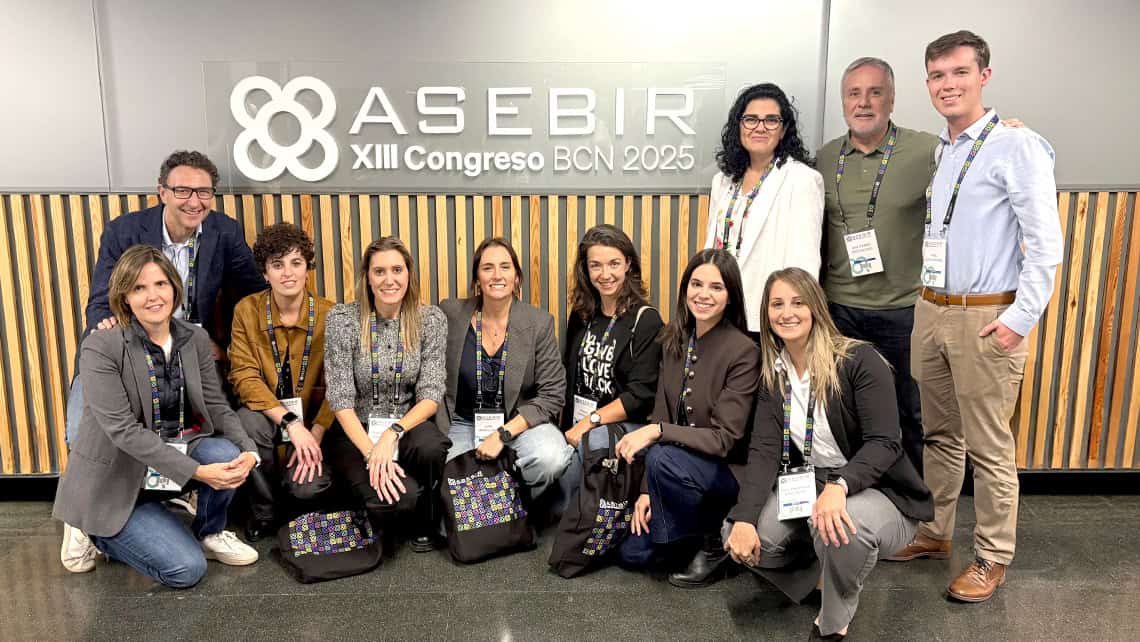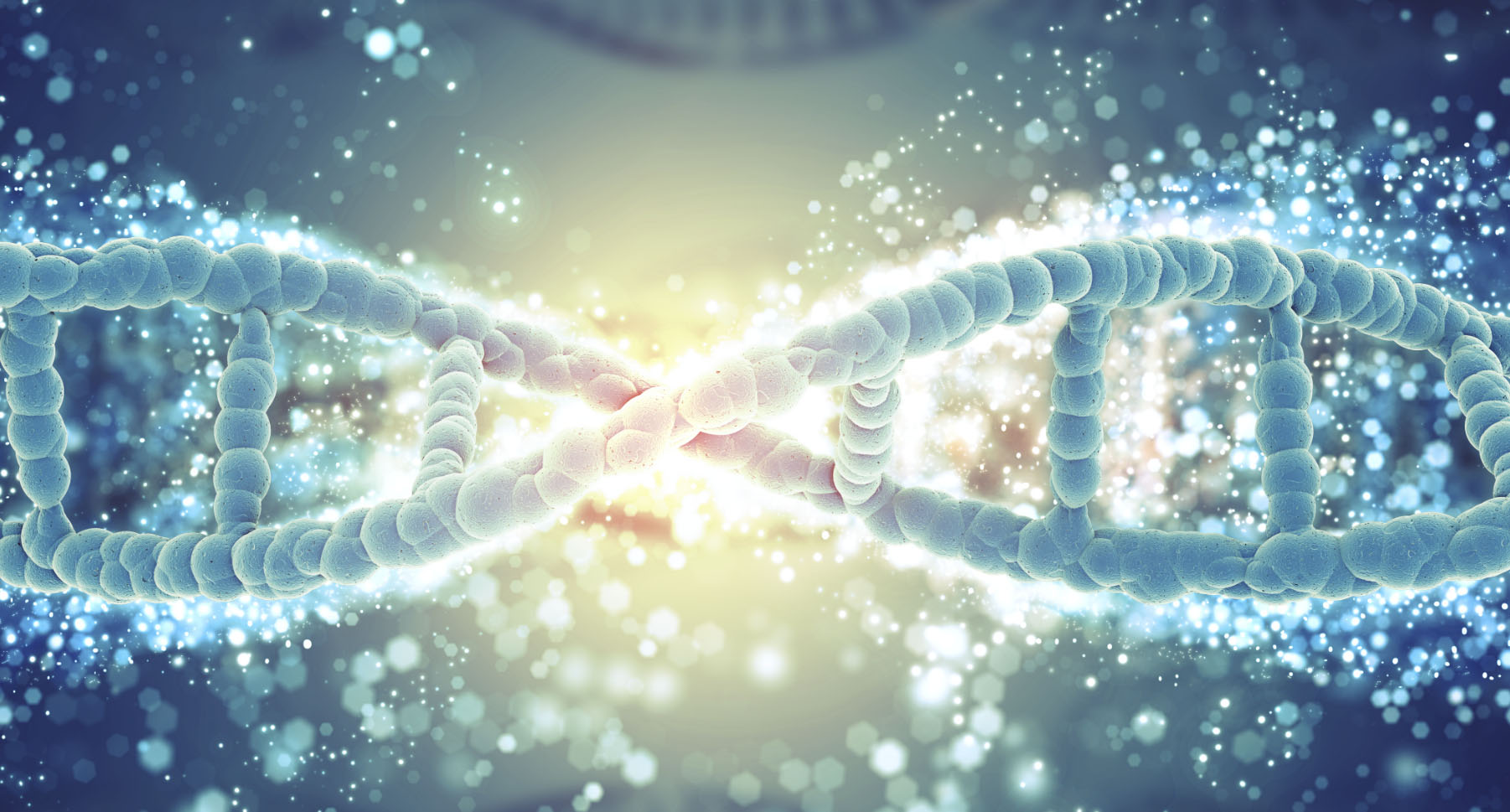Instituto Bernabeu shares the results of its 13 research studies presented at the ASEBIR 2025 Congress
November, 14th 2025

Instituto Bernabeu has concluded its participation in the 13th Congress of the Spanish Association for the Study of Reproductive Biology (ASEBIR), held in Barcelona from 12 to 14 November, with a prominent scientific presence that reaffirms our Institution’s leadership in research and innovation in embryology and reproductive genetics.
Altogether, the teams from the Embryology (IVF) and Molecular Genetics (IB BIOTECH) laboratories presented 13 research studies accepted by the ASEBIR Scientific Committee — six of them as oral communications — covering advances ranging from artificial intelligence applied to embryo analysis to new genetic targets in idiopathic infertility and improvements in cryopreservation techniques.
Instituto Bernabeu’s participation in ASEBIR 2025 once again reflects our commitment to translational research, which transforms scientific knowledge into tangible improvements in treatment and clinical outcomes for our patients.
Below are the 13 research studies developed by IB and accepted by the Scientific Committee for this 13th edition of ASEBIR:
Oral Communications ASEBIR 2025
Interchromosomal effect (ICE) in carriers of structural chromosomal abnormalities depends on the type of abnormality and parental origin
This study demonstrates a higher risk of generating aneuploid embryos in chromosomes not involved in the structural abnormality (ICE) in patients who are carriers of structural chromosomal abnormalities. Furthermore, male carriers and those with reciprocal translocations present a higher risk of aneuploidy in uninvolved chromosomes, suggesting a more pronounced interchromosomal effect. These findings have direct implications for reproductive counselling. Dr Belén Lledó, Scientific Director of IB Biotech and lead author of the study, presented the work and highlighted: “Patients with structural chromosomal rearrangements have a higher risk of embryonic aneuploidies due to the interchromosomal effect.”
Authors: Belén Lledó, José A. Ortiz, Ruth Morales, Francisca M. Lozano, Adoración Rodríguez-Arnedo y Andrea Bernabeu.
Whole-exome sequencing in idiopathic infertility phenotypes: New genetic targets
Through whole-exome sequencing in 148 patients, the study identified candidate genetic variants that could explain different infertility phenotypes, such as premature ovarian insufficiency or sperm abnormalities. The study proposes new genetic targets that expand the understanding of infertility phenotypes. According to lead author Francisca Lozano: “Whole-exome sequencing is useful for patients with idiopathic infertility, as a new diagnostic approach and to improve reproductive counselling.”
Authors: Francisca Lozano, Ruth Morales, Belén Lledó, José A. Ortiz, Azahara Turienzo, Ana Pay y Andrea Bernabeu.
Direct swim-up in the IVF laboratory: An efficient and less invasive alternative to gold-standard techniques. Prospective randomised study
The study compares the direct swim-up method — without centrifugation — with standard techniques. Preliminary results show equivalent fertilisation and embryo development rates, with less manipulation and improved laboratory efficiency. Our colleague Laura Cascales presented this advancement: “Our results show that in selected semen samples, direct swim-up is a viable alternative to standard reference techniques.”
Authors: Rebeca Bravo, Ana García Roa, Luis G. Arias, Laura Cascales, Mónica Aparicio, Beatriz Boyano, José A. Ortiz, Leyre Herrero, Andrea Bernabeu y Jorge Ten.
Prospective validation of ultra-fast warming of donor oocytes (Kitazato protocol)
The results show survival rates, embryo development, and clinical outcomes comparable to the conventional method. This new protocol significantly reduces exposure time to cryoprotectants and optimises laboratory workflow, improving efficiency and reproducibility. Leyre Herrero emphasised: “The validation of this ultra-fast oocyte warming technique is a highly relevant contribution to reproductive cryobiology, providing robust evidence supporting the efficacy and safety of a method that optimises cryopreservation processes.”
Authors: Leyre Herrero, Laura Cascales, Mónica Aparicio, Beatriz Boyano, Ana García Roa, Rebeca Bravo, Andrea Bernabeu y Jorge Ten.
Sperm capacitation during selection using a granulosa cell-based microfluidic device
This study demonstrates that a novel granulosa cell–based microfluidic device enables sperm selection without centrifugation, yielding cells with lower DNA fragmentation. It also confirms that this method induces sperm capacitation, doubling the percentage of phosphorylated sperm compared to controls. This technique emerges as a promising alternative to classic selection methods. The study was led and presented orally by Professor José Luis Girela, Director of our Master in Reproductive Medicine (University of Alicante – Instituto Bernabeu).
Authors: José Luis Girela, Ángel Máñez, Nerea Díaz, Miguel Herreros, Andrea Bernabeu y Jorge Ten.
Effect of trophectoderm biopsy on post-warming collapse dynamics
This study analyses how trophectoderm biopsy affects embryo morphokinetics after warming. Although a higher number of collapses was observed, no differences were found in implantation or pregnancy rates, confirming the procedure’s safety.
Authors: Esther Abellán, M.I. Rodríguez, A. Sola, A. Rodríguez Arnedo, J.A. Ortiz, A. Bernabeu y J. Ten.
Poster Presentations ASEBIR 2025
Development of MosaicScore: a machine-learning scoring system for prioritising mosaic embryos based on live-birth rate
The team developed MosaicScore, a machine-learning system that predicts the probability of reproductive success in mosaic embryos. Based on the analysis of over 8,000 embryos, the model identifies key factors such as embryo quality and biopsy timing, offering a more precise and personalised approach to embryo selection. Professor José Antonio Ortiz describes MosaicScore as: “a highly useful tool for selecting the best mosaic embryo for transfer.”
Authors: José A. Ortiz, Ruth Morales, Belén Lledó, Francisca M. Lozano, Alba Cascales, Jorge Ten, Juan C. Castillo y Andrea Bernabeu.
Influence of vitrification–warming medium combinations on survival and clinical outcomes in cryotransfer cycles
This retrospective study shows that mixing media from different manufacturers is feasible, although homogeneous protocols — particularly with SafeSpeed® — provide better clinical outcomes, reinforcing the value of standardisation. Ángel Linares notes: “This research reflects our commitment to innovation and quality in reproductive medicine. Our goal is to optimise vitrification protocols and move towards greater standardisation, ensuring the best clinical outcomes for our patients.”
Authors: Ángel Linares, Adoración Rodríguez-Arnedo, Mª Isabel Rodríguez, Juan J. Piqueras, José A. Ortiz, Jaime Guerrero, Jorge Ten y Andrea Bernabeu.
New genetic variants associated with variability in gamete thawing tolerance
The study identified genetic variants that may explain differences in how oocytes and sperm tolerate freezing and thawing processes, paving the way for personalised treatments based on individual “cryotolerance.” Lead author Azahara Turienzo explains: “This discovery will allow us to advise patients on whether it is preferable to use fresh gametes due to genetic factors, potentially improving treatment outcomes.”
Authors: Azahara Turienzo, J. Guerrero, A. Pay, E.M. García, A. Marco, R. García, F.M. Lozano, A.M. Cascales, B. Lledó y A. Bernabeu.
Re-expansion of artificially collapsed blastocysts after warming: influence on clinical outcomes
This study evaluates whether artificial collapse prior to vitrification influences re-expansion and clinical success after warming. Although no significant differences were found, a trend towards better outcomes in collapsed embryos was observed, supporting the need for further research. Lead author Ainoa Sola notes: “Our results highlight the importance of reviewing every detail of vitrification processes to continue advancing towards safer and more effective success rates.”
Authors: Ainhoa Sola, M.I. Rodríguez, E. Abellán, A. Rodríguez Arnedo, J.A. Ortiz, A. Bernabeu y J. Ten.
Ultra-rapid vitrification and warming of oocytes is feasible: proof of concept
This study demonstrates the feasibility of vitrifying and warming oocytes in extremely short times while maintaining survival and viability rates equivalent to standard protocols, opening new avenues for optimisation in IVF laboratories. Laura Cascales points out: “This proof of concept showed that both vitrification and warming of oocytes are viable, with results equivalent to conventional methods.”
Authors: Laura Cascales, Leyre Herrero, Mónica Aparicio, Beatriz Boyano, Ana García Roa, Rebeca Bravo, Andrea Bernabeu y Jorge Ten.
Prospective validation of the ultra-rapid embryo warming technique
This study validates an ultra-rapid embryo warming protocol that dramatically reduces manipulation time without compromising survival or clinical outcomes. It represents a key improvement in the efficiency and safety of cryopreservation. Laura Cascales summarises: “We demonstrated that one-step, one-minute embryo warming is safe, effective, and comparable to conventional warming.”
Authors: Laura Cascales, Leyre Herrero, Mónica Aparicio, Beatriz Boyano, Ana García Roa, Rebeca Bravo, José A. Ortiz, Andrea Bernabeu y Jorge Ten.
Comparison between microfluidics and density gradients for sperm selection: retrospective analysis of embryo development outcomes
This retrospective study compares microfluidics with density-gradient techniques for semen preparation. Results show that microfluidics does not improve fertilisation, embryo development, or embryo quality in patients without DNA fragmentation. Density gradients produced more good-quality embryos, suggesting that microfluidics should be restricted to selected cases.
Authors: Nadia Iervolino, Á. Máñez-Grau, J. Ortiz, A. Rodríguez-Arnedo, A. Bernabeu y J. Ten.
The DNA of Instituto Bernabeu: Science in the service of life and our patients
These advances result from a strategic vision developed over more than thirty years: a multidisciplinary medical model in which research and clinical care are not separate fields, but mutually reinforcing pillars that deliver highly precise, fully patient-oriented medicine.
By fostering an integrated ecosystem where scientific findings are swiftly and directly transferred to clinical practice, we have consolidated our position as one of Europe’s leading centres in scientific output in the field of fertility, while building international collaborations with universities and reference centres.
ASEBIR 2025 has once again allowed us to share new perspectives and insights with colleagues in the captivating fields of reproductive biology and genetics.

